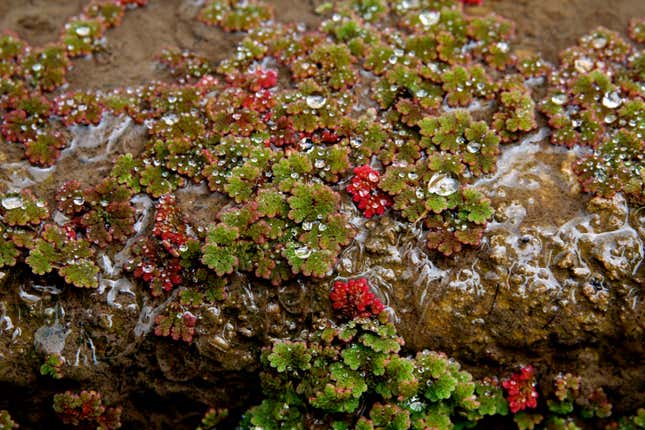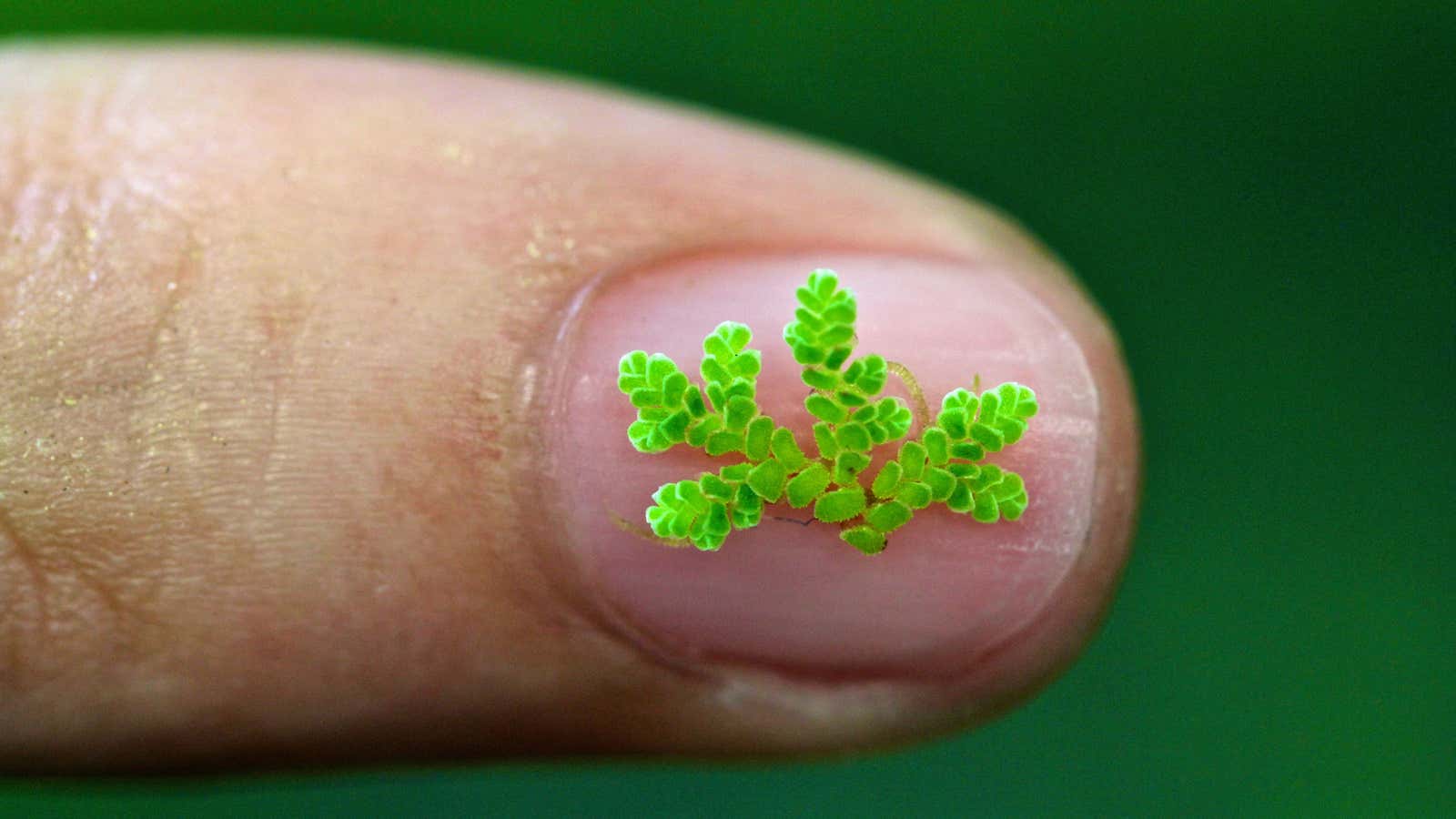The tiny fern known as Azolla filiculoides is adorable by any measure. First of all, it is very small. Each of its leaves is the size of a gnat, those tiny black dots that fly like dust motes around fruit left out too long. Second, it grows in lovely scalloped layers, like a flapper’s dress (for a very tiny flapper).
A whole Azolla plant, leaves and all, is the size of an M&M, or a human fingernail bed. But it is never wise to conflate cuteness with weakness. Roughly 50 million years ago, when the Earth was a much warmer place, the Azolla fern began spreading out in the Arctic Ocean, growing over the open sea in mats. It now turns up in Arctic ice cores in vast quantities.
This great Azolla boom was so successful that it lasted for 800,000 years, and is now known to paleobotanists as the “Azolla event.” Green plants suck up carbon dioxide; Azolla is particularly good at doing so. Over that period, researchers believe it sequestered about 10 trillion tons of carbon dioxide from the Earth’s atmosphere, or well over 200 times the total amount of carbon dioxide humans currently release into the atmosphere every year.
During the Azolla boom, global temperatures plummeted, suggesting the diminutive fern “played a key role in transitioning Earth from a hot house to the cool place it is today,” Fay-Wei Li, a plant evolutionary biologist at Cornell University, said in a press release. As Yale’s E360 pointed out, scientists have wondered for years if Azolla could be harnessed to cool the planet again.
Yet the genetics of the Azolla were poorly understood, until now. Li and Duke University evolutionary botanist Kathleen M. Pryer, along with a team of 40 international scientists, published a paper earlier this month in the journal Nature Plants in which they sequenced the complete genome of Azolla for the first time, along with a second fern species known as Salvinia cucullata. Their research marks the first time anyone has sequenced the genome of any fern species.

During the sequencing process, Li and his colleagues found a fern-specific protein known to repel insects, likely adapted into the plant’s genome from bacteria. “In general, insects don’t like ferns, and scientists wondered why,” Li said in a release. Locating the source of ferns’ natural insect resistance could have “huge implications for agriculture,” he said. Some modern industrial pesticides are linked to human health problems and contribute to air and water pollution; a fern-protein-based pesticide would be a massive breakthrough.
But Azolla’s apparent trove of useful qualities does not stop there: The plant’s shape contains specialized little indents where it houses cyanobacteria, a form of blue-green algae that acts as a nitrogen fixer—that is, converting nitrogen in the atmosphere into a fertilizer. The fern hosts the bacteria, providing it with sugary fuel, and in doing so, helps make its own fertilizer.
Farmers throughout Asia, particularly in China and Vietnam, already knew that: They have used Azolla as a form of fertilizer in rice fields for more than 1,000 years. In their Nature Plants paper, Li and his team identified the genetic underpinning of that symbiotic relationship between the cyanobacteria and the fern.
“With this first genomic data from ferns, science can gain vital intelligence for understanding plant genes,” Li said. “We can now research its properties as a sustainable fertilizer and perhaps gather carbon dioxide from the atmosphere.”
The researchers used a crowdfunding platform to fund much of the project; 123 backers donated $22,000 to the team.
“I’m super excited that we were able to carry this genome from the start to finish, and with support from crowdfunding, from the general public,” Li told Discover Magazine. “We are doing the genome for the people, supported by the people. That’s kind of a nice feeling.”
